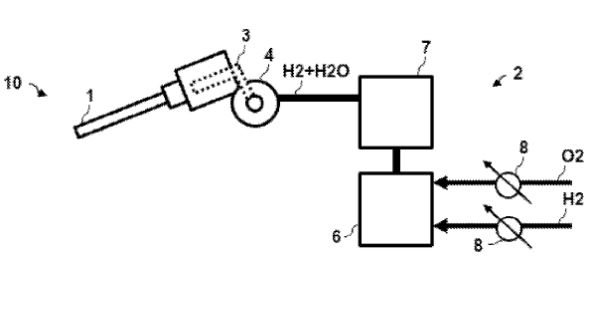The patent describes a hydrogen direct injection system designed for internal combustion engines in motor vehicles. This innovative system integrates a fuel line and a fuel injector capable of injecting hydrogen fuel into the engine’s combustion chamber.
A distinctive feature of this system is its dual functionality to transmit both hydrogen fuel and water, which serves to lubricate the fuel injector.
As the automotive industry transitions towards more sustainable fuel solutions, hydrogen has gained traction as a viable alternative. This patent introduces a hydrogen direct injection system aimed at internal combustion engines, offering a cleaner and more efficient fuel option. Unlike traditional internal systems solely relying on fossil fuels, this system leverages hydrogen, reducing emissions significantly while maintaining engine performance.
Central to the innovation is the fuel injector’s capability to handle both hydrogen fuel and water. The injector receives hydrogen through the fuel line, precisely directing it into the combustion chamber. Additionally, the water is integrated into the system not as a fuel component but as a lubricant. This lubrication is critical as it ensures the fuel injector operates smoothly, preventing wear and tear and extending the system’s lifespan.
Traditional internal combustion engines rely on various methods to maintain engine lubrication, typically involving oil-based products. This invention takes a different approach by using water as a lubrication medium. Water’s properties help in reducing friction within the fuel injector, enhancing its operational efficiency. This novel use of water supports the engine’s sustainable operation, aligning with broader environmental goals.
While the significance of this patent should not be overstated, it represents a step towards integrating hydrogen as a mainstream automotive fuel. By addressing the dual challenges of fuel injection and component lubrication, this system could potentially lower the barrier for hydrogen adoption in vehicles, offering a bridge between current technologies and future innovations.
The introduction of hydrogen-based fuel systems like the one described in this patent underscores the automotive industry’s commitment to sustainability. As combustion engine technologies gradually adapt to new fuels, patents such as these serve as critical catalysts for change. They highlight the importance of innovative engineering solutions to meet the growing demands for cleaner and efficient automotive technologies.





